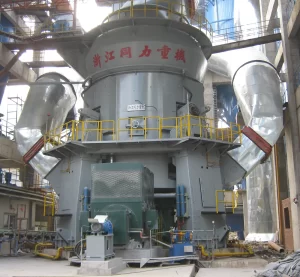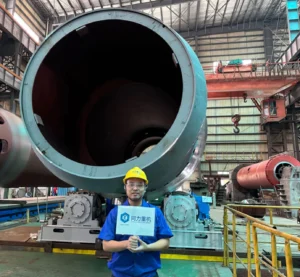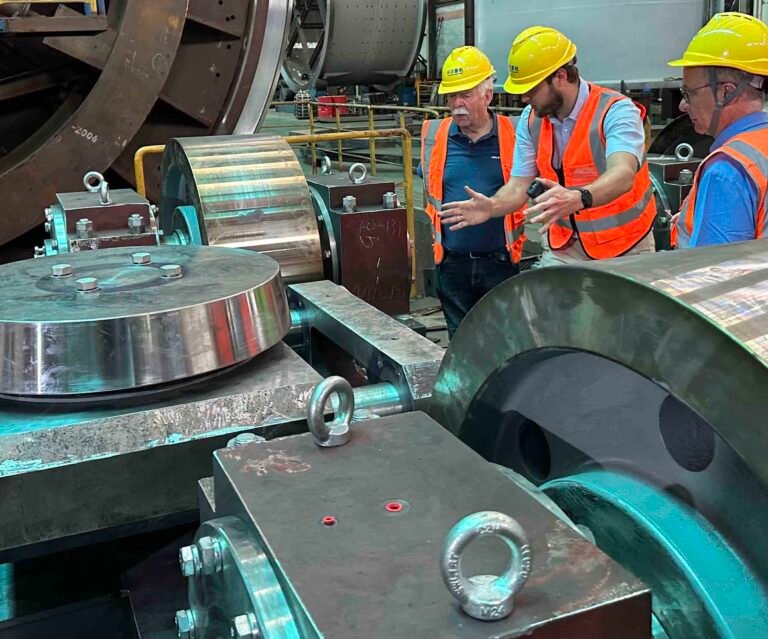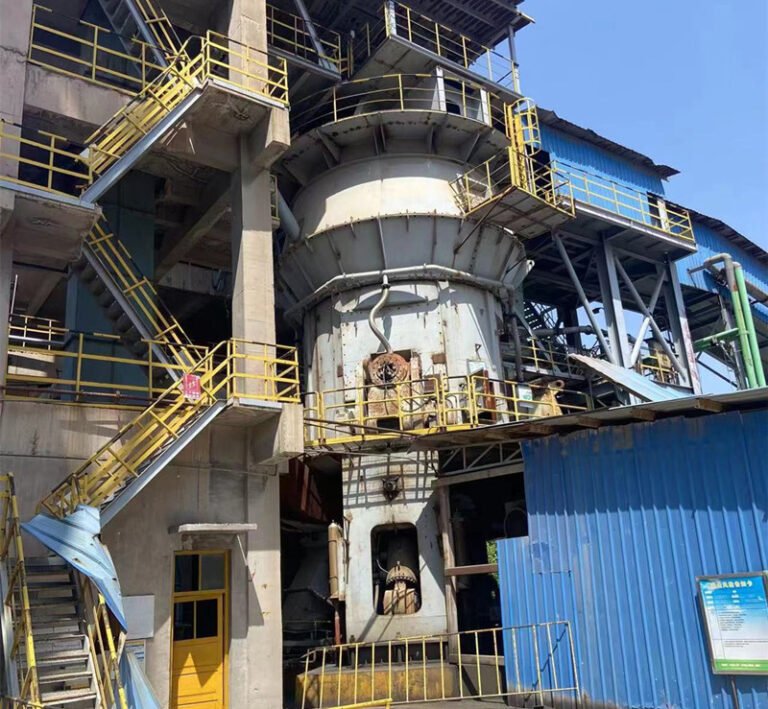
Portland cement, named after its hardened color, which resembles the stone of the Isle of Portland in the UK, has become the world's most widely used engineering cementitious material since its invention by Joseph Aspdin in 1824. It is essentially a multi-mineral mixture formed by calcining raw materials containing calcium, silicon, aluminum and iron in precise proportions at high temperatures. A deep understanding of its raw material composition and reaction products is key to optimizing performance and promoting sustainable development. For batch and continuous manufacturing and production of Portland cement, the following mineral materials are used: calcareous materials (limestone or chalk), argillaceous materials (shale or clay), blast furnace slag, silica sand, iron ore and gypsum as raw materials. Cement plants are established in locations where there is an adequate supply of these raw materials and long-distance transportation facilities for raw materials and finished products. The manufacture of Portland cement is a complex process that is completed by the following steps: grinding the raw materials, mixing them in certain proportions according to their purity and composition, and then burning them in kilns at temperatures of about 1350 to 1500 ⁰C to sinter. During this process, these materials are partially fused to form clinker in the form of balls by breaking the chemical bonds of the raw materials and recombining into new compounds. The clinker is cooled and ground into a fine powder to which about 3% to 5% gypsum is added. Through this process, the product formed is Portland cement.
What is Portland Cement?
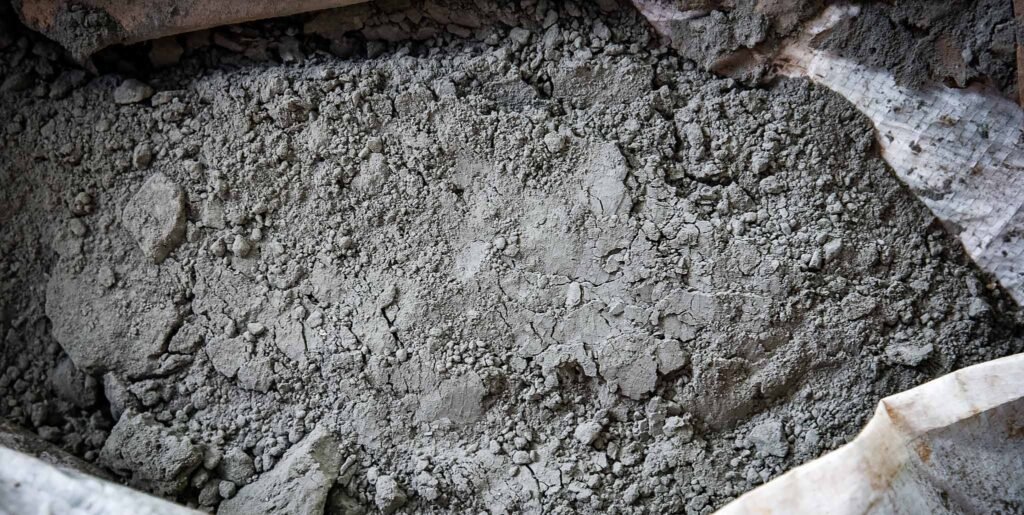
The word cement is derived from the Roman term "Opus Caementicium", which describes a certain form of masonry made from crushed stone with burnt lime as a binder. In ancient times, builders were looking for a binder that would help them to bind stones or bricks together. The old cement material used for this purpose was earth, with straw sometimes added to bind the dry bricks together. In 1824, Joseph Aspdin, a Leeds builder, discovered what we know as "Portland Cement". He prepared it by calcining finely ground limestone, mixing it with finely crushed clay, and then calcining the mixture in a kiln until all the carbon dioxide evaporated. Subsequently, the mixture was finely ground and used as cement. The name Portland is merely a trade name indicating that the hardened cement resembles the natural stone of Portland, England, and in no way indicates the composition of the cement. Portland cement is a hydraulic cement (a binder that remains stable under water) used as a bonding or binding material in construction work. It is mainly used to make mortar or concrete. Mortar is the adhesive used to bind stones, bricks, tiles, blocks and various forms of building units, while concrete is a heterogeneous mixture of cement, aggregates and water that has excellent compressive strength. Portland cement is also called silicate cement .
Chemical composition of Portland cement
The main components of Portland cement include calcium oxide (CaO), silicon dioxide (SiO2), aluminum oxide (Al2O3) and iron oxide (Fe2O3). They account for more than 95% of the total cement composition. In addition, there are other oxides such as magnesium oxide (MgO), sulfur trioxide (SO3), titanium dioxide (TiO2), phosphorus pentoxide (P2O5), potassium oxide (K2O), sodium oxide (Na2O), etc., which account for less than 5% of the total. These components that make up the raw materials react at high temperatures and eventually form the compounds tricalcium silicate, calcium hydrogen silicate, tricalcium aluminate and tetracalcium aluminoferrate. Tricalcium silicate and calcium hydrogen silicate determine the strength of Portland cement, among which tricalcium silicate mainly affects the early strength. Tricalcium aluminate causes the initial solidification of Portland cement.
| Lime (CaO) | 60% to 67% |
| Silicon dioxide (SiO2) | 17% to 25% |
| Alumina (Al2O3) | 3 to 8% |
| Iron oxide (Fe2O3) | 0.5 to 6% |
| Magnesium oxide (MgO) | 0.1 to 4% |
| Sulfur trioxide (SO3) | 1 to 3% |
| Soda and/or potash (Na2O+K2O) | 0.5 to 1.3% |
Core raw material composition: main ingredients and their proportions
The birth of Portland cement begins with the precise proportioning and transformation of natural mineral resources:
1. Lime (CaO)
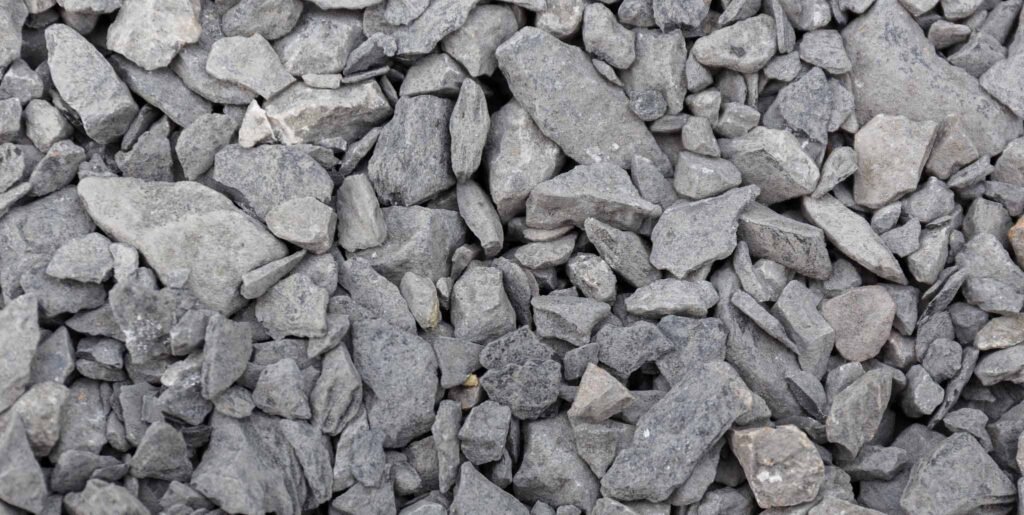
Ratio: 60–67%
Source: Lime is derived from raw materials such as limestone, chalk and shale.
Function: Lime or calcium oxide is the main component in the formation of calcium silicate and calcium aluminate, compounds that are essential to the strength and durability of cement. Adequate lime content helps ensure that cement achieves its desired hardness and elasticity.
Limitations: If too much lime is added, it causes the cement to expand and become weak, leading to cracking and disintegration. Conversely, if the lime content is too low, the strength of the cement will be affected and the setting time may be accelerated, making it difficult to work with.
2. Silicon dioxide (SiO₂)
Proportion: 17-25%
Source: Silica is obtained from sand, mudstone and other materials rich in silicates.
Function: Silica or silicon dioxide increases the strength of cement by forming dicalcium silicate and tricalcium silicate. These compounds are essential for the compressive strength of cement, helping it to withstand heavy loads.
Limitations: While adding silica strengthens cement, it also increases the setting time. Therefore, a balance must be struck to ensure that the cement remains workable without sacrificing its strength.
3. Alumina (Al₂O₃)
Proportion: 3-8%
Source: Alumina or aluminum oxide comes from materials such as bauxite and alumina-rich clays.
Function: Alumina accelerates the setting process of cement, making it beneficial for applications that require rapid hardening. In addition, alumina acts as a flux, lowering the clinker temperature during the production process, thereby saving energy.
Limitations: In excess, alumina can weaken cement because it reduces its resistance to high temperatures. This delicate balance is essential to maintain cement's durability under varying conditions.
4. Iron oxide (Fe₂O₃)

Proportion: 0.5-6%
Sources: Iron oxide typically comes from materials such as fly ash, iron ore and scrap iron.
Function: Besides imparting color, iron oxide also plays a vital role in improving the strength and hardness of cement. When subjected to high temperatures, it reacts with aluminum and calcium to form tricalcium aluminum ferrite, thereby enhancing the structural integrity of cement.
Limitations: Too much iron oxide will change the color and affect hardness, and the amount needs to be controlled to achieve optimal properties.
5. Magnesium oxide (MgO)
Ratio: 0.1–3%
Sources: Magnesium-containing minerals provide magnesium oxide or magnesium oxide.
Function: Magnesium oxide adds hardness and color to cement, making it a beneficial ingredient for both aesthetic and functional purposes.
Limitations: If the magnesium oxide content exceeds 3%, the cement will become weak and its overall strength may decrease. Therefore, magnesium oxide must be closely monitored to maintain the desired properties.
6. Calcium sulfate (CaSO₄)
Proportion: 1-3%
Source: Calcium sulfate usually exists in the form of gypsum and is commonly found in limestone.
Function: This ingredient controls the initial setting time of the cement, making it easier to handle and process during construction.
Limitations: Excess calcium sulfate can cause delayed setting and other handling problems, so maintaining the correct ratio is critical for effective use.
7. Sulfur trioxide (SO₃)
Proportion: 1-3%
Function: Sulfur trioxide contributes to the strength of cement, ensuring it remains stable and intact over time.
Limitations: Excess sulfur trioxide can weaken cement and may result in structural instability. Careful monitoring during the production process can help prevent these problems.
8. Bases (such as Na₂O and K₂O)
Ratio: 0.1–1%
Function: Although their direct effect on cement is limited, alkalis such as soda (Na₂O) and potash (K₂O) are often present as residuals from the manufacturing process.
Limitations: Excessive amounts of alkali (more than 1%) can lead to several complications including alkali-aggregate reaction, staining and efflorescence, thus affecting the visual and structural qualities of the cement.
| Portland Cement | normal | Fast hardening | Low in calories |
| (a) Composition: Percentage | |||
| lime | 63.1 | 64.5 | 60 |
| Silicon dioxide | 20.6 | 20.7 | 22.5 |
| Alumina | 6.3 | 5.2 | 5.2 |
| Iron Oxide | 3.6 | 2.9 | 4.6 |
High temperature calcination and mineral phase formation
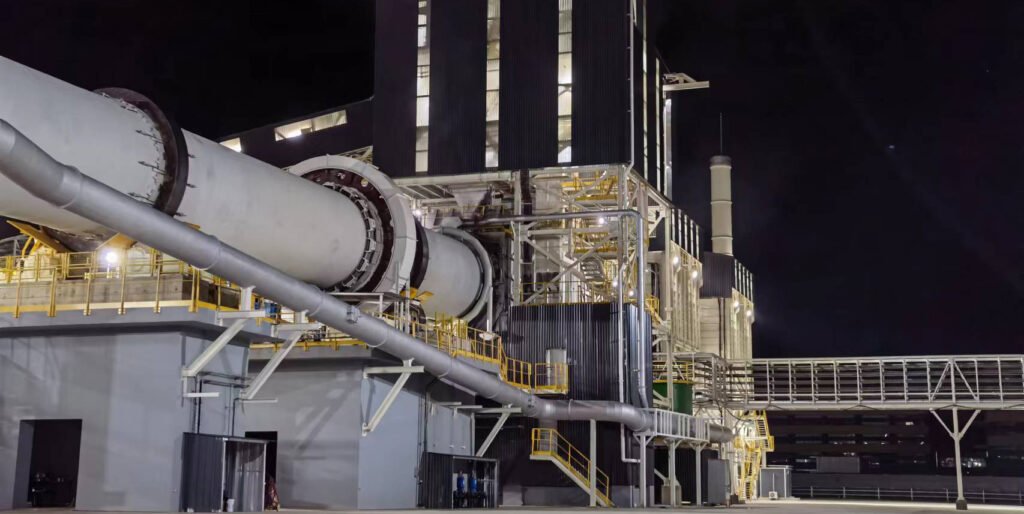
The above raw materials are mixed and ground into "raw meal" in precise proportions, and then calcined ("clinkerized") at a high temperature of about 1450°C in a cement kiln, where complex physical and chemical reactions occur, eventually forming black granular "clinker" composed mainly of four major minerals:
Tricalcium silicate (Alite, C₃S): The highest content (50-70%). It has a fast hydration rate and is the main contributor to early strength (7 days or less), which is crucial to the ultimate strength of cement.
Belite (C₂S): The content is second (15-30%). It hydrates slowly and mainly continues to hydrate in the later period (after 28 days), providing long-term strength growth.
Tricalcium aluminate (Aluminate, C₃A): content (5-10%). The hydration speed is very fast, and if not controlled, it will cause flash setting. It is a large early heat releaser, which has a great impact on the setting time, and also affects the compatibility with admixtures and sulfate resistance.
Tetracalcium aluminoferrate (Ferrite, C₄AF): Content (5-15%). Medium hydration rate. Contributes to the color of cement (gray), has a certain contribution to the later strength, has a moderate heat release, and can improve the chemical corrosion resistance of cement (especially sulfate resistance).
Main mineral composition and characteristics of Portland cement clinker
| Mineral Name | Chemical abbreviation | Approximate content (%) | Hydration speed | Main Contributions | Heat release |
| Tricalcium silicate | C₃S | 50 - 70 | quick | Early high strength | high |
| Dicalcium Silicate | C₂S | 15 - 30 | slow | Late strength growth | Low |
| Tricalcium aluminate | C₃A | 5 - 10 | Very fast | Coagulation time (need to be controlled) | Highest |
| Tetracalcium aluminoferrite | C₄AF | 5 - 15 | medium | Color, chemical resistance | medium |
Characteristics of Portland Cement
High strength
Portland cement has a high solidification and hardening speed and high strength, especially its early strength growth rate. It is suitable for high-strength concrete structures, prestressed concrete projects and projects with high early strength requirements.
High heat of hydration
Portland cement is rich in carbon disulfide, which results in high initial heat release, fast release rate and high strength. If used in winter construction, it can avoid frost damage.
Good wear resistance
Portland cement has the characteristics of high strength, good wear resistance and small shrinkage, and can be widely used in pavement and ground engineering.
High alkalinity and carbonation resistance
Portland cement has the characteristics of strong alkalinity, high density and strong resistance to carbonation. When the steel bar is buried in an alkaline environment, a gray passivation film will form on the surface, which can prevent the steel bar from rusting for decades.
Minimum dry shrinkage
Portland cement produces a large amount of calcium silicate hydrate during the hardening process. Therefore, the cement paste has a high density, less free moisture, and is not prone to shrinkage cracks. Therefore, Portland cement can be used in concrete projects in dry environments.
Good frost resistance
Portland cement mixture is not easy to penetrate color, hardened cement stone has high density and better frost resistance than other general cement. It is suitable for concrete projects under repeated freezing and thawing in severe cold areas.
Portland Cement Manufacturing Process
Portland cement manufacturing process can be divided into 6 steps: raw material crushing, pre-homogenization, fine grinding, clinker production, cement grinding, cement filling, etc. In these processes, we need the assistance of different types of cement equipment, such as cement kiln, cement mill, cement crusher, etc. The specific manufacturing process is as follows:
Raw material crushing

After the cement raw materials are mined, most of them should be crushed into small particle sizes. Coal is the main fuel for cement production and also needs to be crushed in advance. In this step, it should all be crushed by a special crusher and then transported to the pre-homogenization field by a belt conveyor.
- Cone Crusher
- Jaw Crusher
- Impact Crusher
- Hammer Crusher
Pre-homogenization
Pre-homogenization refers to the preliminary homogenization of cement raw materials and fuel raw materials during the material storage and retrieving process by applying scientific stacking and recycling technology. In this step, a stacker is used to pre-homogenize and stack the raw materials in layers. Then the scraper reclaimer takes out the raw materials and sends them to the batching station with the help of a belt conveyor.
- Stacker Reclaimer
- Belt conveyor
- Collective conveyor
- Bucket Elevator
Fine grinding

After the raw material batching is completed, the cement raw materials (calcium raw materials, clay raw materials, a small amount of corrective materials) need to be further ground by the original factory to achieve a certain fineness, appropriate chemical composition and uniform structure, so as to meet the calcination requirements of various cement kilns. Commonly used raw material mills include cement ball mill, cement vertical mill, Raymond mill, etc. Air coal sweeper is used for coal grinding.
- Cement ball mill
- Raymond Mill
- Cement vertical mill
- Air Coal Sweeper
Clinker production

Clinker production is the most critical stage in the cement manufacturing process. At present, the new dry clinker production technology is the most advanced clinker production method. It has the advantages of high efficiency, energy saving and high production quality. With this production method, the raw powder is first pre-decomposed in the cyclone preheater and calciner, and then enters the cement kiln for high-temperature calcination. After that, the calcined clinker will be cooled by the grate cooler and stored in the clinker silo.
- Cement rotary kiln
- Grate cooler
- Cyclone preheater
Cement grinding

After calcination, the clinker needs to be mixed with gypsum and additives to meet the requirements of different properties. Then, they will be ground into a suitable particle size by the cement plant ball mill to form a certain particle gradation, thereby increasing the hydration area and accelerating the hydration speed.
- Cement roller press
- Cement silo
- Cement separator
Cement filler
Cement filling is the last step in the cement manufacturing process. After the cement powder is discharged from the discharge system at the bottom of the cement silo, it is sent to the cement packaging machine by a bucket elevator. In the packaging machine, they are packed into bags and then transported to different sales markets.
- Cement packaging machine
- Pulse jet bag filter
Correlation between chemical composition and properties of Portland cement
The chemical composition of the clinker (usually expressed in the form of oxides) directly determines the proportions of the above-mentioned mineral phases and thus the properties of cement:
Lime saturation factor (LSF) or silicon ratio (SM), aluminum ratio (IM): These raw material ratio parameters are strictly controlled to obtain the ideal C₃S and C₂S ratio. High C₃S cement has high early strength but high hydration heat; high C₂S cement has high late strength potential and low hydration heat.
C₃A content: directly affects the setting time, early heat release rate and adaptability of cement to admixtures (such as water reducers), and is also related to the ability to resist sulfate erosion (low C₃A "sulfate-resistant cement").
Gypsum dosage: needs to be precisely optimized. Too little will cause flash setting; too much may cause expansion or reduce strength. Gypsum also participates in later hydration to form a sulphoaluminate phase that contributes to strength.
FAQ
Portland cement is made primarily from limestone, clay, and shale. These ingredients are mixed and heated in a kiln to form clinker, which is then ground into a fine powder called Portland cement.
Portland cement usually takes 24 to 48 hours to dry to the touch. However, full curing (for the cement to reach full strength) usually takes about 28 days.
Lime (calcium oxide) in Portland cement is the primary binder. It reacts with silica, alumina, and iron oxide to form compounds that give cement its strength and durability.
A standard mix for Portland cement includes water, sand, and aggregates such as gravel or crushed stone. A common ratio for concrete is 1 part Portland cement, 2 parts sand, and 4 parts gravel, with water added depending on the desired consistency.
Portland cement is so named because its color and qualities are similar to the stone quarried there. The name was given by inventor Joseph Aspdin to highlight the cement's similarity to the precious Portland stone.
Substandard Portland cement is cement that contains excessive amounts of free lime or magnesium oxide, which can cause the cement to expand and crack over time, compromising the integrity of the structure.
Conclusion
Portland cement is not a single compound, but a multi-mineral aggregate made from specific natural raw materials (limestone, clay/shale, iron materials) through precise batching, grinding, calcination at 1450°C, and then grinding with appropriate amount of gypsum. Its core value comes from the four main mineral phases in the clinker - C₃S, C₂S, C₃A, C₄AF. The content and proportion of these mineral phases and the regulating role of gypsum together give Portland cement key gelling properties, adjustable setting and hardening rates, strength development laws and durability characteristics. Portland cement has a wide variety of uses and is the backbone of modern construction. From everyday construction projects to large-scale infrastructure, this essential material plays a vital role in shaping our built environment. Understanding the different types of Portland cement and their specific uses can help builders, engineers and architects make informed decisions to ensure the durability, strength and service life of their building structures. As the basis of concrete and mortar, Portland cement has always been an essential element for building safe and resilient buildings around the world. Whether you are constructing a simple sidewalk or an elaborate and intricate architectural masterpiece, choosing the right Portland cement is the key to success.

